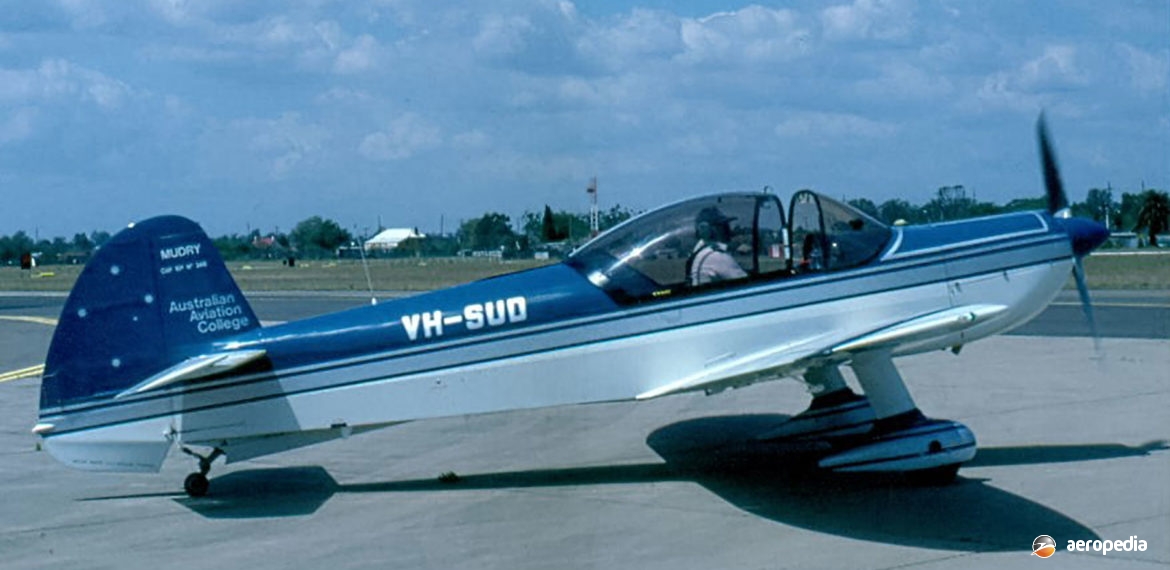Photograph:
Mudry Cap 10B VH-SUD (c/n 249) at Richmond, NSW in 1988 (David C Eyre)
Country of origin:
France
Description:
Two-seat light aerobatic training aircraft
Power Plant:
One 134 kw (180 hp) Textron Lycoming AEIO-360-B2F four-cylinder horizontally-opposed air-cooled engine
Specifications:
- Wingspan: 8.06 m (26 ft 5¼ in)
- Length: 7.16 m (23 ft 6 in)
- Height: 2.55 m (8 ft 4½ in)
- Wing area: 10.85 m² (116.79 sq ft)
- Max speed at sea level: 270 km/h (168 mph)
- Max cruising speed at 75% power: 250 km/h (155 mph)
- Stalling speed, flaps down: 85 km/h (53 mph)
- Max rate of climb at sea level: 360 m/min (1,180 ft/min)
- Service ceiling: 5,000 m (16,400 ft)
- Range with max fuel:1,200 km (745 miles)
- Empty weight (utility category): 540 kg (1,190 lb)
- Loaded weight: 830 kg (1,829 lb)
History:
Produced by Avions Mudry et Cie at Bernay, France the Cap 10 series of light two-seat aerobatic aircraft was developed from the Piel Emeraude, the prototype flying for the first time in August 1968, certification being obtained in September 1970. Late production aircraft (known as the Cap 10B) differed from early aircraft in having a ventral fin and an enlarged rudder. Wing construction is of all spruce single-spar torsion box structure with a rear auxiliary spar, and plywood covering with an outer skin of polyester fabric. The fuselage is of conventional spruce girder structure with rounded top decking and polyester fabric covering.
The type has proved quite popular, 56 being supplied to the French Air Force, six to the French Navy, and 20 to the Mexican Air Force. The Cap 10R is a variant specifically for glider towing, and the Cap 21 series is a single-seat variant for competitive aerobatics. Development continued for some years.
In 1989 Qantas announced it was initiating a cadet training scheme through the Australian Aviation College at Parafield, SA, the school acquiring a fleet of Socata Tobagos, Socata Trinidads, and two Mudry Cap 10Bs, the latter for dual-seat aerobatic training, these becoming VH-SUD (c/n 249) and VH-SZY (c/n 250).
In January 1993 two further examples arrived for the BAe-Ansett Flying College at Tamworth, NSW becoming VH-YAN (c/n 265) and VH-YAO (c/n 266). Since then a Cap 232 has been registered in Queensland, becoming VH-SHI (c/n 04), registered at one stage to Flying Fighters Pty Ltd of Sunnybank on 16 December 1998. One 10B has operated in New Zealand, this being based at Timaru with American registration N780S. A further example was imported to Australia in 2014, becoming VH-FFY (c/n 200) to its owner at Bilgola Plateau, NSW in November that year and based at Albion Park, NSW.

